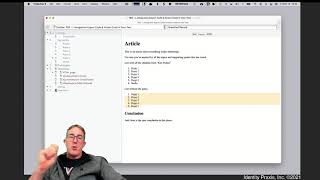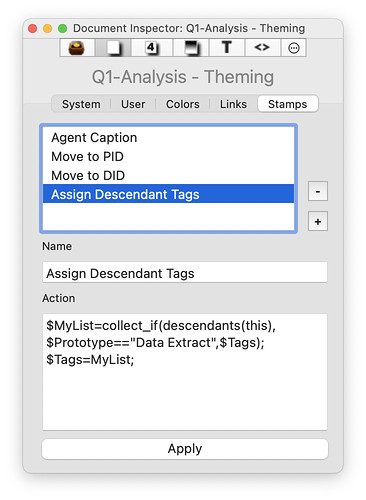Tinderbox Training Video - Integrating Export Code & Action Code in Your Text
| Level | Advanced |
| Published Date | 2/12/21 |
| Tags | Tinderbox, aTbRef, 4Cs of Knowledge Exchange, Export Code, Action Code |
| Video Length | 07:59 |
| Video URL | Tinderbox Video - Integrating Export Code & Action Code in Your Text - YouTube |
| Example File | TBX - L Integration Export Code & Action Code in Your Text.tbx (153.6 KB) |
| Revision | 1 |
| TBX Version | 8.9 |
| Instructor | Michael Becker |
In this lesson, I explain how you can use export code and action code together, in a note’s $Text, to pull attribute values from other notes into the note you’re working on. There are all kinds of applications for this, such as building a table to contents, pulling in key points from other notes, etc. I recently used it to pull in a list of milestones from a project into a project summary report. This is a super great way of pulling all your hard-earned insight into one place so that you can contribute them to the world.
Reference Material

